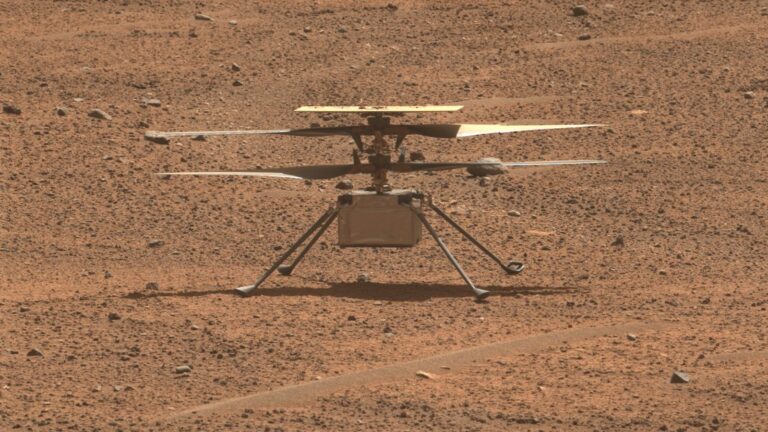The helicopter made 72 flights when it was only intended to make five.
The Ingenuity Mars helicopter was created by NASA for a very short mission on Mars, lasting only thirty days. However, the drone ended up staying on the planet for three years before it finally stopped flying. Following the announcement that the Ingenuity mission would be terminated, the rover with the aptly named Perseverance will continue to operate independently. In the end, it was not the computer that was not protected or the battery that was getting old that brought the mission to an end; rather, it was a broken rotor blade.
Under the guidance of Perseverance, Ingenuity arrived on Mars on February 18, 2021. It was in April of that year when the helicopter was first put into flight after being installed on the surface. “Ingenuity” was constructed by engineers at the Jet Propulsion Laboratory (JPL) of the National Aeronautics and Space Administration (NASA) as a technology demonstration utilizing primarily off-the-shelf components, one of which being a Snapdragon 801 smartphone CPU. A total of five flights were planned for the Ingenuity by NASA. The achievement of the objective was significantly surpassed by it.
The final flight of the helicopter was number 72, which was meant to be nothing more than a test to determine what went wrong with the 71st flight, which took place on January 6. The helicopter was unable to maintain ground tracking, which resulted in an emergency landing, which brought the flight to an abrupt conclusion. On January 18th, Flight 72 was in operation. The drone had reached a height of forty feet, hovered for four and a half seconds, and then started decreasing in altitude. On the other hand, Ingenuity lost contact with the surface a few feet below it.
The team was able to see the shadow of Ingenuity’s mangled rotor blade (picture above) once they had successfully reestablished communication. Mars has an atmosphere that is only one percent as dense as the atmosphere of Earth, therefore there is no room for error on Mars. For the purpose of increasing lift, the rotor blades of the Ingenuity were constructed by engineers from JPL using a carbon fiber weave with a specific profile. Because of the injured tip, Ingenuity is now firmly rooted in the ground.
National Aeronautics and Space Administration (NASA) has attributed the damage to a hard landing, implying that the vehicle lost control when it cut off contact at the conclusion of mission 72. Although NASA is still conducting an investigation, it appears that the blade made contact with the ground. It’s a shame that the tremendous run that Ingenuity has been on has come to an end, but it’s still a huge success for NASA. “Through missions like Ingenuity, NASA is paving the way for future flight in our solar system and smarter, safer human exploration to Mars and beyond,” according to NASA administrator Bill Nelson.
Ingenuity was not initially intended to be of assistance to Perseverance; but, due to its unexpected success, the drone was able to fly ahead of the slower wheeled robot and scout the terrain. As a result of the NASA’s profound admiration for Ingenuity, the organization has initiated the process of incorporating comparable helicopters into its future mission plans. To give one example, the problematic Mars Sample Return mission is currently planned to use two helicopters that are similar to the Ingenuity system. Powered flight will continue to be an important part of NASA’s exploration of Mars from this point forward, even if the mission undergoes significant modifications as a result of the current study.

